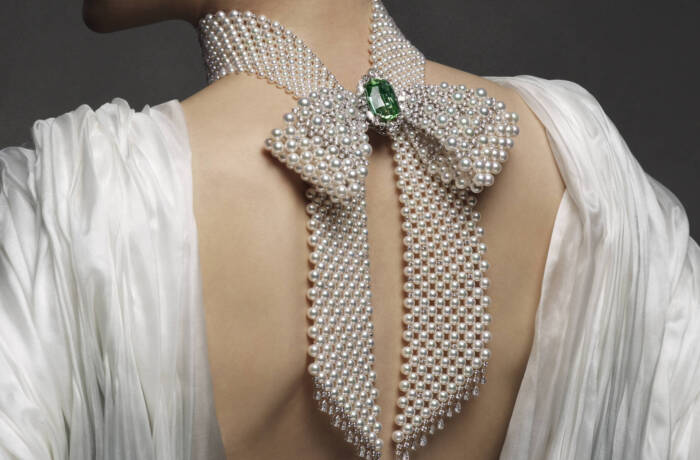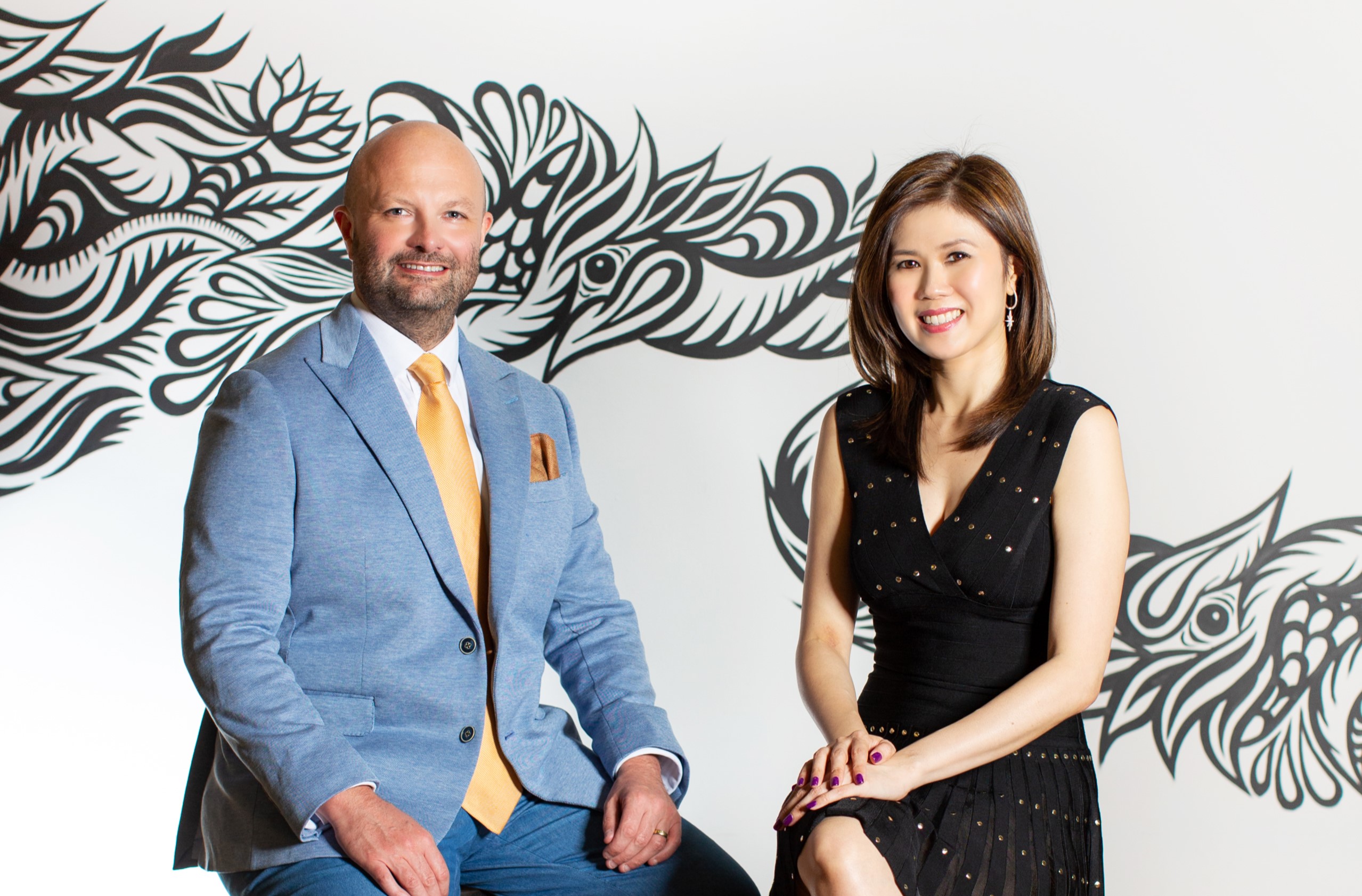
Magnus Renfrew has twenty years’ experience in the international art world, the last decade of which have been spent in Asia
Magnus Renfrew knows about art fairs in Asia. He co-founded Art Hong Kong (now Art Basel Hong Kong) and has launched numerous other fairs in the region. He speaks with LUX about Art SG, the fair he and his partners launched in Singapore as a hub for Southeast Asia, the Asian art market, and the future of art fairs
LUX: Do you think Singapore will become an art and/or cultural hub for Southeast Asia? Why did you choose Singapore rather than (for example) Bangkok, Jakarta, or KL?
Magnus Renfrew: Each city is unique with individual strengths and spheres of influence. Singapore is the gateway to Southeast Asia and as the de facto hub for the region, which has a population of 650 million people nearing the size of Europe, so logic dictates that it too should host an international art fair to serve a region that has some of the fastest growing economies in the world. What’s more, Southeast Asia has a diverse and exciting range of cultural ecosystems, and we want to bring together these communities alongside the international art world. Singapore has exceptional infrastructure and transport links, great hotels and restaurants, English is commonly spoken, Mandarin is commonly spoken. All these factors make it an exceptional place to host a major international art fair.
Furthermore, Singapore has a strong local art scene, with local galleries and considerable government investment in art and culture, which sees an active interest in growing the ecosystem in the city. The city’s cultural landscape is developing rapidly with world class museums such as the National Gallery of Singapore, Singapore Art Museum, alongside a growing cluster of commercial galleries, and an increasingly engaged community of collectors. We saw the successful launch of our inaugural edition last year, and I am excited to see the fair continue to develop against this exciting backdrop.
The case for Singapore is continuing to build as it gains greater importance geo-economically, geo-politically and as the Asia centre of wealth management. Singapore is in the ascent in every aspect and culture will inevitably be a part of that story.
LUX: You have significant fairs in Japan and Taiwan. What is the secret of a successful art fair in East Asia?
MR: It is important to have a solid premise for the fair, to identify the natural catchment area, to focus on who the fair serves, and to build domestic and regional support from all stakeholders – the government, galleries, collectors, and institutions. There are no shortcuts and it takes time to build.
What are the differences between Art SG and Art HK at a similar stage?
MR: The overall context of the art market in Asia is of course very different and the collector base across Asia has developed out of all recognition. In a very short space of time ART SG has successfully been able to attract a geographically diverse audience from across Southeast Asia and beyond. The context for ART SG is very different. When we started ART HK there were few institutions and an art scene heavily focused on auctions – it is arguable that ART HK played a significant role in building the case for Hong Kong as a cultural hub and in encouraging collectors to understand the importance of the gallery system. Singapore’s art scene is much more established than Hong Kong was when we launched, with a vibrant gallery scene and exceptional institutions, as well as a pro-active private collectors and foundations. This was reflected in the extraordinary diversity and quality of offerings during Singapore Art Week.
ART SG has its own distinctive identity as an important meeting point for collectors and art lovers from Southeast Asia and around the world by bringing together the best of regional and international galleries and artists, alongside dynamic programming to deepen understanding of its cultural context.
Follow LUX on instagram: luxthemagazine
LUX: Second year of Art SG saw some galleries (Perrotin, Zwirner, Esther Schipper) not return – why? Will they be back?
MR: Galleries have a host of different reasons that play into their decision making including their own programming. Pace is going to be opening their space in Tokyo this year, so they will be participating in Tokyo Gendai for the first time. Perrotin has chosen to do Taipei Dangdai and Tokyo Gendai this year. A number of galleries who chose to sit out ART SG this year visited the Fair and expressed how impressed they were with the quality of attendance, the buzz and the energy. I would anticipate that we will be working again with those galleries in Singapore and elsewhere in the future.
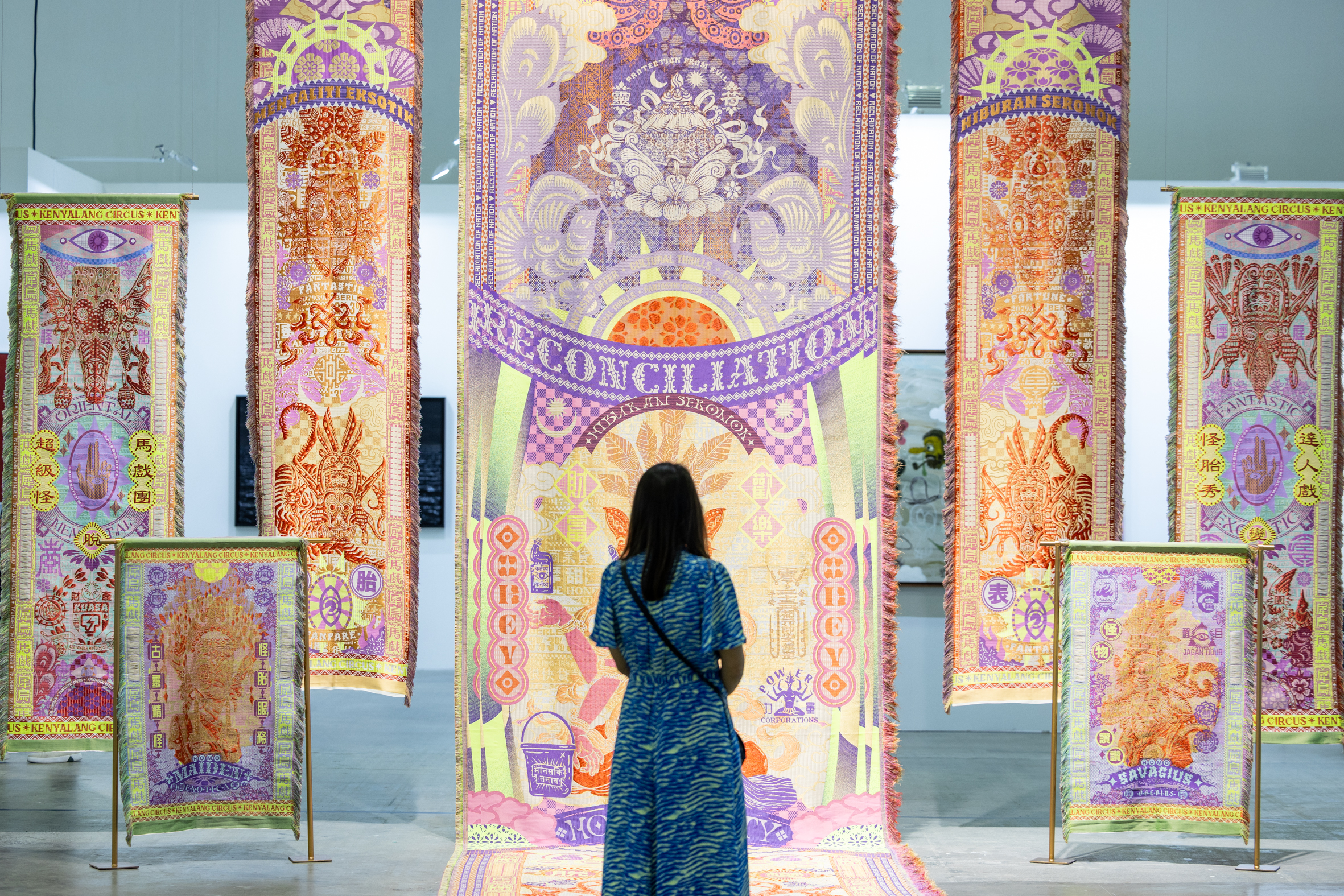
Southeast Asia’s leading international art fair (ART SG), attracted 43’000 visitors in 2023.
LUX: How did this year’s edition do, commercially?
MR: We are delighted by the response to the second edition of ART SG. Throughout the fair’s four days, galleries reported speedy and sustained sales, with works placed in major private and institutional collections. Galleries highlighted an enthusiastic response from both established and emerging collectors from all corners of the world, with many noting that ART SG had provided a great platform for meeting new collectors.
A snapshot of reported sales include: Thaddeaus Ropac sold a work by Anselm Kiefer for EUR 1.1 million, alongside works by Lee Bul, Miquel Barceló, Jules de Balincourt, Alex Katz, Oliver Beer, Mandy El-Sayegh, and James Rosenquist; Sundaram Tagore sold a range of works by Hiroshi Senju, Jane Lee, Miya Ando, and Zheng Lu for a combined total of over USD 1 million; White Cube sold works by Tracey Emin, Jessica Rankin, and Darren Almond, among others for a combined total of GBP 1.5 million; Waddington Custot sold two sculptures by Barry Flanagan, including a work sold for USD 680,000 to a Chinese resident of Singapore, an installation featured as part of PLATFORM by Ian Davenport sold for USD 360,000 and two sculptures by Yves Dana, including a work for sold for USD 92,000 to a collector based in Singapore; Lehmann Maupin sold a number of works, including a painting by David Salle sold for USD 250,000 to a prominent family collection in Singapore, alongside multiple works by Lee Bul and Kim Yun Shin for prices within the range of USD 200,000 – 300,000 and USD 60,000 – 90,000 respectively; Johyun Gallery sold a number of works, including a painting by Park Seo-Bo for USD 250,000 and multiple works by Lee Bae for prices in the range of USD 50,000 – 180,000 each; The Back Room placed an installation by Marcos Kueh featured as part of PLATFORM to an institution in Singapore with a price range between SGD 50,000 – 100,000; First-time participant Sabrina Amrani sold three works by Carlos Aires within a price range of USD 27,000 – 60,000 to private collectors in Singapore; Asia Art Center sold a number of key works by Li Chen and three works from Ju Ming’s Tai Chi Series, all of which have been acquired by private collectors, with a total value of around USD 600,000; Waterhouse & Dodd sold four works by Duncan McCormick to private collectors in the UK, South Korea, Italy and Hong Kong for a combined total of USD 150,000; albertz benda reported a sold-out presentation of three new paintings and four mixed-media watercolours by Australian painter Del Kathryn Barton to a Chinese collector on the opening day; Carl Kostyál reported a sold-out booth of Indonesian artist Atreyu Moniaga, with works priced at USD 18,000 each; Harper’s sold a painting by Eliot Greenwald for USD 40,000 and a painting by Marcus Brutus for USD 32,000; and MAKASIINI CONTEMPORARY sold works by Nir Hod and Jacob Hashimoto for USD 68,000 and USD 40,000 to private collectors in Singapore and Belgium respectively.
Read more: Shangri-La, Singapore, Review
LUX: Some collectors said to us that official programming for significant collectors was limited compared with early years of Art HK. How would you respond to this?
MR: Within ART SG’s bespoke VIP program, collectors were able to tap into a vibrant and dynamic line up of art events, openings, and after-parties to enrich their experience of the overall fair and art week, including private collection visits in collectors’ residences, artist studio visits, gallery openings, and more. Collectors were able to RSVP to openings and curator-led tours of private collection and foundation exhibitions such as Translations: Afro-Asian Poetics by non-profit collector-led foundation The Institutum, curated by Dr Zoe Whitley, director of Chisenhale Gallery, London, Rough, presented by The Pierre Lorinet Collection, and Chronic Compulsions presented by The Private Museum, as well as tours of major museum exhibitions at the National Gallery of Singapore and Singapore Art Museum. There were after-hours events including specially curated art parties at the National Gallery Singapore, ArtScience Museum, and Soho Residency, and a young collectors’ party at a spectacular new venue with views over the Singapore skyline. Our collector programming also offered immersive art and food dining experiences created especially for ART SG, such as Indochina by Senang Supper Club which featured two Cambodian artists discussing their art and non-profit initiative in Siem Reap over a curated menu from the Indochina region; a walking tour of cultural precinct Kampong Glam led by award winning cookbook author Khir Johari and Michelin-starred chef Ivan Brehm; and a four-hands Afro-Asian dinner which reflected the narrative and curation of the Translations exhibition. In addition to the official programming by the fair, there were also a number of gallery dinners, collector-hosted evenings, and karaoke nights and many other parties to round off the week.
LUX: What will you change about the fair for 2025?
MR: We will be doubling down on VIP outreach across our core constituency of Southeast Asia, Indonesia, Philippines, Thailand and also Vietnam, as well as markets with a resonance with Singapore, such as Australia, New Zealand, Chia and South Asia, and expanding the programming of the fair both within on-site and for collectors throughout the city. We will be working on more collaborations with privately owned museums and foundations, as alignment with collector-led initiatives that seek to make a difference is key to ART SG’s ambition to grow the regional ecosystem.
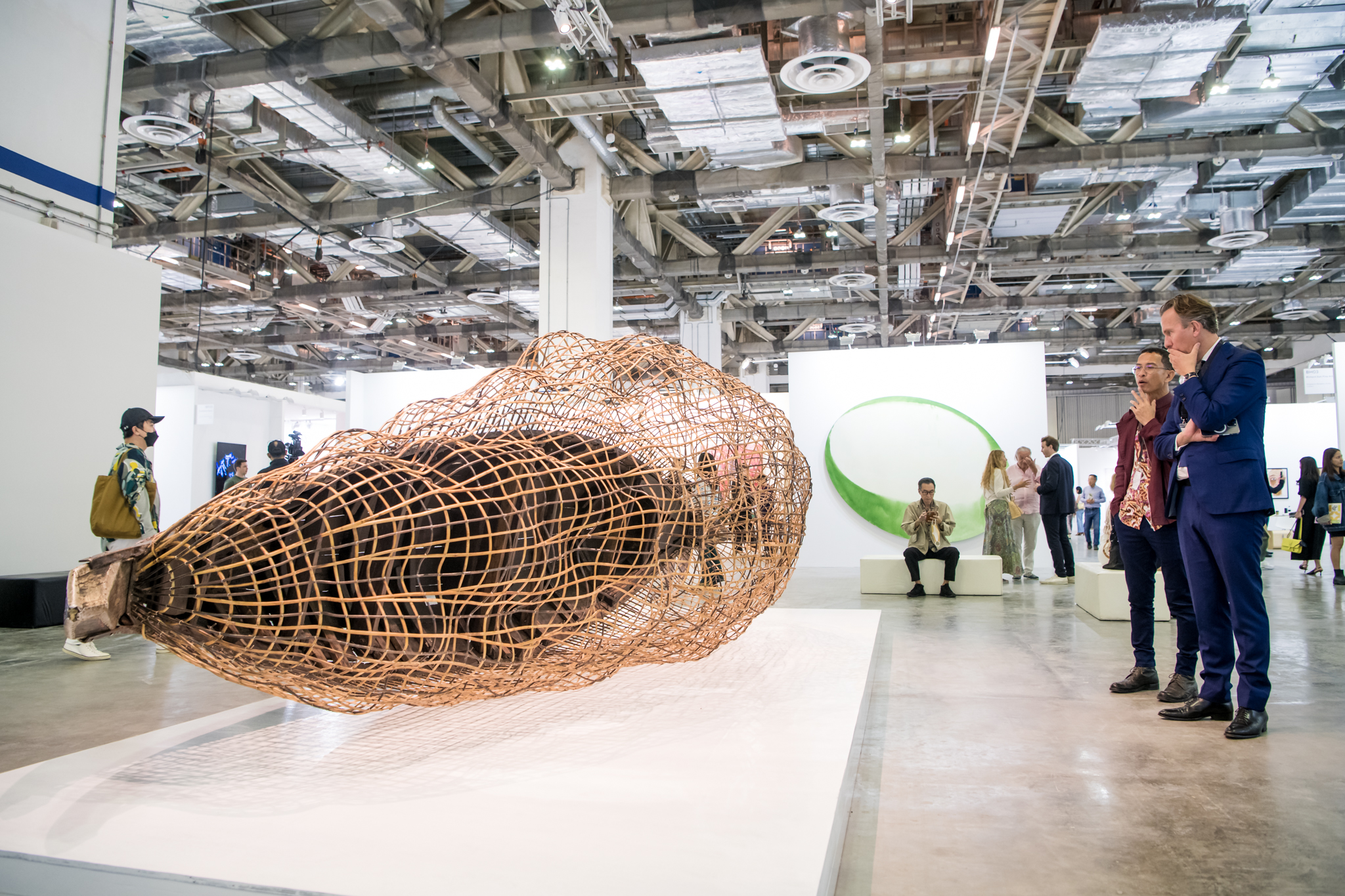
The Art SG 2023 showcased an assembly of leading galleries from the region and around the world
LUX: What is the main collector base for Art SG?
MR: There is an established base of sophisticated collectors in Southeast Asia and a younger generation of new buyers who are hungry to engage with contemporary art.
Singapore is also increasingly home to the region’s wealth base as demonstrated by the growing number of family offices opening here, as well as its emerging position as Asia’s tech capital. This together with established international businesses and entrepreneurs recognising the benefits of Singapore as the base for their pan-Asian operations, provides the context for a rapidly developing, forward thinking and affluent collector base, who are increasingly engaging with Singapore’s rich cultural landscape.
Thousands of VIPs attended the preview day of ART SG’s highly anticipated second edition. Strong attendance from both local and international collectors and leading figures from institutions, museums, and foundations, hailing from Indonesia, Thailand, Philippines, Malaysia, Vietnam, Australia, Japan, Korea, Mainland China, Hong Kong, Taiwan as well as Europe and the US. Notable visitors include:
Collectors
- Alan Lau, Hong Kong
- Albert Lim & Linda Neo, Singapore
- Alexander Tedja, Indonesia
- Alina Xie, China
- Andrew Xue, Founder of Pond Society, China & Singapore
- Belinda Tanoto, Founder of Tanoto Art Foundation, Indonesia
- Dato Noor Azman Mohd Nurdin, Malaysia
- Disaphol Chansiri, Thailand
- Ellie Lai, Taiwan
- Eric Booth & Jean-Michel Beurdeley, MAIIAM, Thailand
- Evan Chow, Hong Kong
- Han Nefkens, Han Nefkens Foundation, Spain
- Harayanto Adikoesoemo, Founder of Museum MACAN, Indonesia Iwan Kurniawan Lukminto, Founder of Tumurun Museum, Indonesia Jack Feng, China/Singapore
- Ji Dahai, Founder of Yalv River Art Museum, China
- Jim Amberson, Singapore
- Justine Tek, Director and CEO, Yuz Museum, China
- Kim & Lito Camacho, Singapore
- Kit Bencharongkul, MOCA Bangkok, Thailand
- Kulapat Yantrasast, USA
- Leo Shih, Taiwan
- Li Fan, Founder of Whale Art Museum, China & Singapore
- Mike & Lou Samson, Philippines/Singapore
- Nathan Gunawan, Indonesia/Singapore
- Nishita Shah, Thailand
- Patrick Sun, Founder of Sunpride Foundation, Hong Kong
- Pierre Lorinet, Singapore
- Pontiac Land Group, Singapore
- Rath Osathanugroh, Thailand
- Rudy Tseng, Taiwan
- Rvisra Chirathivat, Thailand
- Simon Cheong, Singapore
- Shunji Oketa, Founder of Oketa Collection, Japan
- Thomas Shao, Founder of the MetaMedia Group and the Shao Foundation, China TY Jiang, Les Yeux Art Foundation, USA
- Wu Meng, M Art Foundation, China
- Xiaoyang Peng, Founder of DRC No.12 space & The Bunker, China
- Yang Bin, China
Institutions
- Aaron Cezar, Founding Director, Delfina Foundation, UK
- Aaron Seeto, Director, Museum MACAN, Indonesia
- Derek Sulger, Co-Chairperson, UCCA, China
- Eugene Tan, Director of National Gallery Singapore and Director of Singapore Art Museum, Singapore
- Jessica S Hong, Senior Curator, Modern and Contemporary Art, Toledo Museum, USA Judith Greer, Director of International Programmes for Sharjah Art Foundation, UAE
- Lee Dong Kook, Director, GyeonGi Cultural Foundation and Gyeonggi Province Museum, Korea
- Mami Kataoka, Director, Mori Art Museum, Japan
- Pi Li, Head of Tai Kwun Contemporary, Hong Kong
- Sook-Kyung Lee, Director, The Whitworth, Manchester & 14th Gwangju Biennale Stefano Rabolli Pansera, Director, Bangkok Kunsthalle, Thailand
- Virginia Moon, Associate Curator, Korean Art, LACMA, USA
- Xie Siwei, Museum Director, Yuz Museum, China
- Xue Tan, Senior Curator, Tai Kwun Contemporary, Hong Kong
- Zoe Whitley, Director, Chisenhale London, UK
LUX: Will art fairs remain strong commercially in the coming decades?
MR: Art fairs always have and will continue to play a crucial role in the art market.
The recent edition of ART SG saw 45,303 visitors across four show days, hailing from Indonesia, Thailand, Philippines, Malaysia, Vietnam, Australia, Japan, Korea, Mainland China, Hong Kong, Taiwan as well as Europe and the US – in increase from the 43,000 visitors who attended the inaugural edition. The strong international attendance from leading private collectors, as well as directors, curators, and patrons from international museums and institutions at ART SG is a testament to the importance and appeal of the fair as the region’s leading fair.
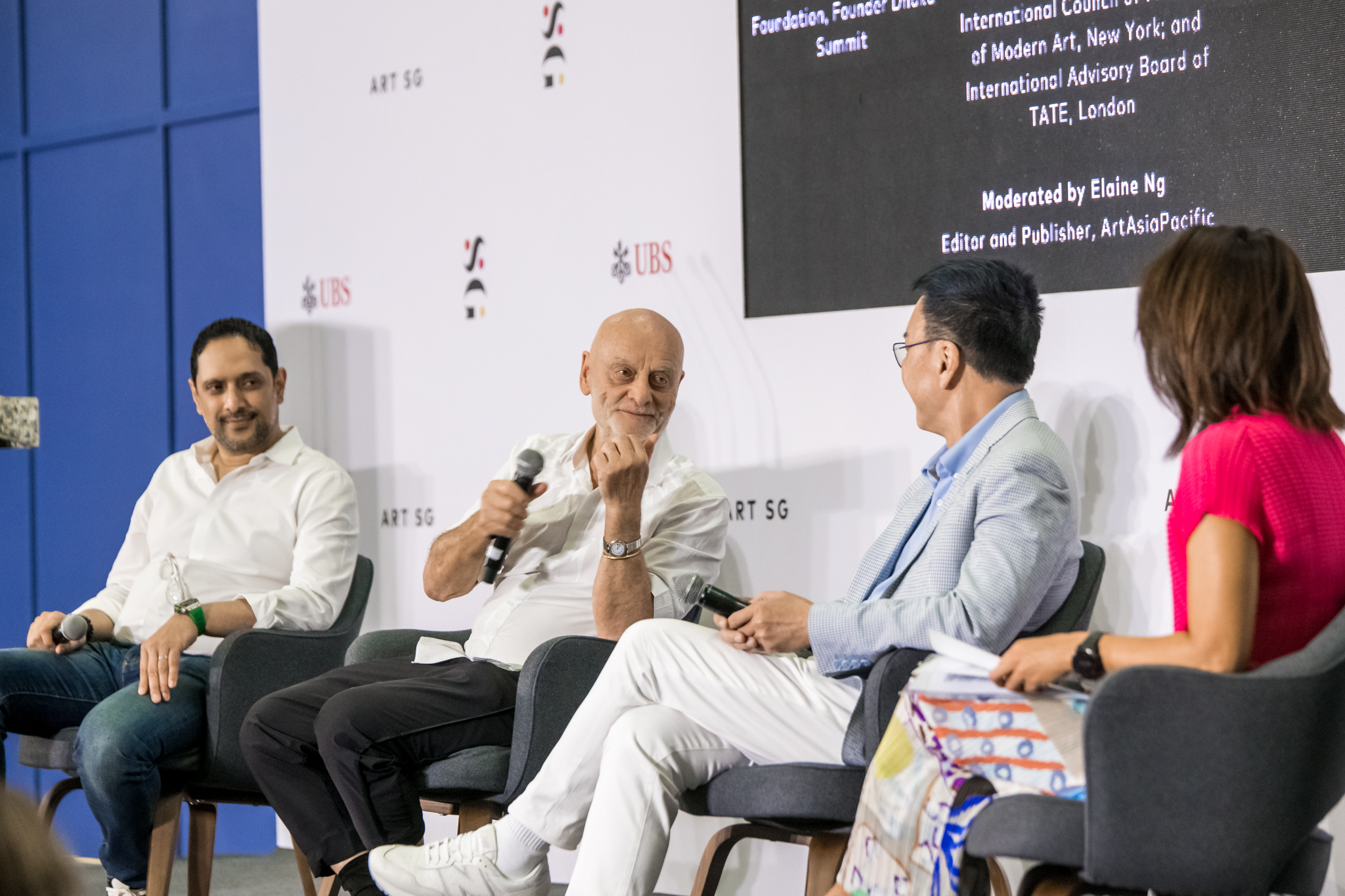
Meaningful dialogues and insightful conversations were held alongside the Fair at ART SG 2023
LUX: Will Art SG help awareness of SE Asian Art grow on the global scene, or is that not the point?
MR: Definitely. As Southeast Asia’s leading art fair, ART SG invites the world’s leading collectors and art leaders to experience Singapore and all that the region has to offer, but also encourage a new generation of emerging collectors to be inspired by the rich diversity of art the region.
ART SG 2024 saw a strong line-up of Southeast Asian galleries making a dynamic debut at the fair, as well as some of the most significant galleries from across the region, featuring both established and emerging Southeast Asian artists. Some of the highlights include FOST Gallery (Singapore) which presented a a significant showcase reflecting recent contemporary art practice in Singapore and Southeast Asia, including Donna Ong, Eng Tow, Ian Woo, Wyn- Lyn Tan, as well as Elaine Roberto-Navas and Luis Antonio Santos; Gajah Gallery (Singapore, Jakarta, Yogyakarta) which showed renowned artists from the region including Suzann Victor, Yunizar and Uji “Hahan” Handoko Eko Saputro; and BANGKOK CITYCITY (Bangkok), whose first-time participation featured a new installation by Tanatchai Bandasak, large-scale paintings by street artist Alex Face inspired by significant political movements in Thailand, and works by renowned Thai artist Korakrit Arunanondchai featuring his classic motifs of denim, fire and mythical imagery, among others.



